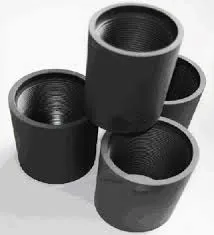- Afrikaans
- Albanian
- Amharic
- Arabic
- Armenian
- Azerbaijani
- Basque
- Belarusian
- Bengali
- Bosnian
- Bulgarian
- Catalan
- Cebuano
- Corsican
- Croatian
- Czech
- Danish
- Dutch
- English
- Esperanto
- Estonian
- Finnish
- French
- Frisian
- Galician
- Georgian
- German
- Greek
- Gujarati
- Haitian Creole
- hausa
- hawaiian
- Hebrew
- Hindi
- Miao
- Hungarian
- Icelandic
- igbo
- Indonesian
- irish
- Italian
- Japanese
- Javanese
- Kannada
- kazakh
- Khmer
- Rwandese
- Korean
- Kurdish
- Kyrgyz
- Lao
- Latin
- Latvian
- Lithuanian
- Luxembourgish
- Macedonian
- Malgashi
- Malay
- Malayalam
- Maltese
- Maori
- Marathi
- Mongolian
- Myanmar
- Nepali
- Norwegian
- Norwegian
- Occitan
- Pashto
- Persian
- Polish
- Portuguese
- Punjabi
- Romanian
- Russian
- Samoan
- Scottish Gaelic
- Serbian
- Sesotho
- Shona
- Sindhi
- Sinhala
- Slovak
- Slovenian
- Somali
- Spanish
- Sundanese
- Swahili
- Swedish
- Tagalog
- Tajik
- Tamil
- Tatar
- Telugu
- Thai
- Turkish
- Turkmen
- Ukrainian
- Urdu
- Uighur
- Uzbek
- Vietnamese
- Welsh
- Bantu
- Yiddish
- Yoruba
- Zulu
Exploring the Benefits and Applications of Tubing Crossover in Oil and Gas Operations
Understanding Tubing Crossover A Key Component in Oil and Gas Operations
In the oil and gas industry, the term tubing crossover refers to an essential aspect of well construction and maintenance. Specifically, it denotes the transition between tubing strings used for the production of oil and gas. To grasp the significance of tubing crossovers, it's important to understand their function, design, and the advantages they provide to drilling operations.
What is Tubing Crossover?
Tubing crossover generally involves a connection point that allows different types of tubing or casing to be linked. This can typically be seen in wells where a change in diameter is necessary, or where different materials must be joined to accommodate varying pressure and temperature levels throughout the wellbore. Crossovers ensure the safe and efficient movement of fluids from the reservoir to the surface, playing a critical role in the well’s productivity.
Importance in Drilling Operations
One of the primary reasons for using tubing crossovers is to enhance the flexibility of well operations. Wells are often designed to handle multiple fluid types, ranging from crude oil and gas to water and other byproducts that may emerge during extraction. Tubing crossovers allow for an adaptable infrastructure that can manage these fluid dynamics effectively.
Moreover, crossovers are crucial when it comes to pressure management. As fluids traverse from deep underground to the surface, the pressure can fluctuate significantly. Utilizing appropriately designed crossovers helps to mitigate these fluctuations, thus reducing the risk of operational failures and blowouts.
Design and Engineering Considerations
tubing crossover

The design of a tubing crossover is predicated on several key factors. These include the types of fluids being transported, the well’s depth and temperature variations, and the mechanical stress that the tubing will endure during operations. Engineers must carefully select materials that can withstand the corrosive properties of certain hydrocarbons or additives, ensuring that the crossover remains functional over time.
Additionally, crossovers can come in various configurations, including tapered and straight designs. The choice between these configurations often depends on the specific requirements of a well and its production profile. Comprehensive field testing and simulation are often conducted to assess the durability and performance of tubing crossover designs before they are deployed in real-world scenarios.
Advantages of Tubing Crossovers
The advantages of incorporating tubing crossovers into a well system are manifold. First, they promote operational efficiency by minimizing downtime and facilitating quicker repairs. If one section of tubing requires maintenance, having crossovers in place allows operators to isolate sections of the well without shutting it down entirely.
Second, tubing crossovers can enhance safety. By providing reliable pressure control and reducing the risk of leaks, they contribute to safer drilling practices. Their ability to manage the diverse conditions within a well can also lead to improved environmental protection measures.
Lastly, efficient use of tubing crossovers can lead to cost savings. By optimizing production flow and reducing the likelihood of equipment failures, operators can decrease maintenance expenses and improve their overall return on investment.
Conclusion
In summary, tubing crossovers are a fundamental component of oil and gas drilling operations, facilitating fluid management, enhancing safety, and promoting operational efficiency. As the industry continues to evolve with advancements in technology and materials, the design and application of tubing crossovers will likely adapt, further playing a pivotal role in the sustainable extraction of hydrocarbon resources. Understanding these essential elements not only aids in the efficient functioning of wells but also ensures that the industry's commitment to safety and environmental stewardship remains a top priority.
-
Tubing Pup Joints: Essential Components for Oil and Gas OperationsNewsJul.10,2025
-
Pup Joints: Essential Components for Reliable Drilling OperationsNewsJul.10,2025
-
Pipe Couplings: Connecting Your World EfficientlyNewsJul.10,2025
-
Mastering Oilfield Operations with Quality Tubing and CasingNewsJul.10,2025
-
High-Quality Casing Couplings for Every NeedNewsJul.10,2025
-
Boost Your Drilling Efficiency with Premium Crossover Tools & Seating NipplesNewsJul.10,2025







